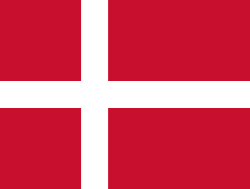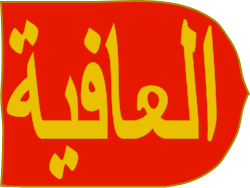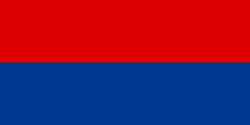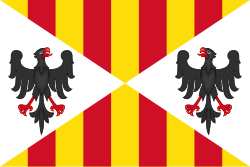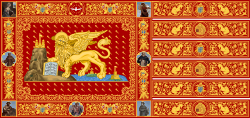1300
| 2. tisíciletí |
◄◄ ◄ 1296 • 1297 • 1298 • 1299 • 1300 • 1301 • 1302 • 1303 • 1304 ► ►►
1300 (MCCC) byl přestupný rok, který dle juliánského kalendáře započal pátkem.
Podle islámského kalendáře se jedná o roky 699 a 700. Podle hebrejského kalendáře se jedná o roky 5060 a 5061.
Události
- 22. únor – papež Bonifác VIII. vyhlašuje první svatý rok
- 15. červen – španělské město Bilbao získává královskou nadační listinu
- 17. červen – Katedrála v Turku je vysvěcena
- srpen – svatba Václava II. a polské princezny Richenzy, zvané v Čechách Eliška Rejčka
Neznámé datum
- Václav II. korunován polským králem, začíná používat titul Král Čech a Polska, vydává zákoník Ius regale montanorum
- Filip IV. Francouzský zahajuje svůj pokus o anektování Flander
- Dante Alighieri se stal priorem Florencie
- peníze užívané ve Florencii se stávají oficiálně první mezinárodní měnou.
- sčítání lidu v Číně zjistilo, že v zemi žije okolo 60 milionů obyvatel
- v Malé Asii se konstituují základy státu osmanských Turků
- Amsterodam se stal městem (alternativou je rok 1301)
- zahájení ražby stříbrných grošů
- Londýn má 50 000–100 000 obyvatel
Probíhající události
- 1286–1306 – Druhé skotské interregnum
Narození
- 1. června – Tomáš, 1. hrabě z Norfolku, syn anglického krále Eduarda I. († 4. srpna 1338)
- 27. září – Adolf Falcký, rýnský falckrabě († 29. ledna 1327)
- 22. prosince – Chošila, císař říše Jüan a veliký chán mongolské říše († 30. srpna 1329)
- ? – Dětřich z Portic, arcibiskup magdeburský, rádce Karla IV. († 17. prosince 1367)
- ? – Jan III. Brabantský, brabantský vévoda († 1355)
- ? – Johana z Pfirtu, vévodkyně rakouská († 15. listopadu 1351)
- ? – Robert Burgundský, hrabě burgundský († 1315)
- ? – Johannes Tauler, německý mystik a kazatel († 1361)
- ? – Žofie Braniborská, brunšvicko-lüneburská vévodkyně († 1356)
- ? – Jaunutis, litevský velkokníže († po roce 1366)
- ? – Kęstutis, litevský velkokníže († 15. srpna 1382)
- ? – Asporça Hatun, druhá manželka osmanského sultána Orhana I. († 1362)
- ? – Ibn Kathir, syrský islámský učenec († 1373)
Úmrtí
- 14. ledna – Isabela z Lusignanu, paní z Beauvoir-sur Mer a Mercillac (* 1234)
- 29. srpna – Guido Cavalcanti, italský básník (* 1259)
- září – Manfréda z Pirovana, italská šlechtična a náboženská vůdkyně (* ?)
- 4. prosince – Albrecht III. Braniborský, markrabě braniborský (* cca 1250)
- ? – Edmund z Cornwallu, hrabě z Cornwallu (* 1249/1250)
- ? – Jan I. Norimberský, purkrabí
- ? – Trần Hưng Đạo, vietnamský vojevůdce (* 1228)
- ? – Berengarie Kastilská, kastilská infantka a řeholnice (* 1253)
- ? – Adenet le Roi, francouzský básník (* asi 1240)
- ? – Anežka z Obřan, moravská šlechtična (* ?)
- ? – Alfons, pán z Leirii, portugalský šlechtic (* 1288)
- ? – Vilém z Nangis, francouzský mnich z benediktinského opatství sv. Diviše (* ?)
Hlavy států
Evropa
Externí odkazy
 Obrázky, zvuky či videa k tématu 1300 na Wikimedia Commons
Obrázky, zvuky či videa k tématu 1300 na Wikimedia Commons
Média použitá na této stránce
Autor: Dragovit, sources: Moravská orlice s klenotem.jpg (the eagle delivered from), Licence: CC BY-SA 4.0
Heraldická vlajka Moravského markrabství a moravských markrabat.
Banner of Kingdom of Poland in the 14th century
A seal of Duke Premislaus II from 1290 shows the ruler holding a banner emblazoned with a crowned eagle. During the reign of King Ladislaus (r. 1320–1333), the red cloth with the White Eagle was established as the royal banner. The orientation of the eagle on the banner varied; its head could point either upwards or towards the hoist.
Flag of Hungary from 6 November 1915 to 29 November 1918 and from August 1919 until mid/late 1946.
Autor: Alex Tora, Licence: CC BY 3.0
Flags of Ruthenian lands in the battle of Tannenberg, 1410.
Flag of Portugal, land use (1830-1910).
Autor: Sodacan, Licence: CC BY-SA 3.0
Královská standarda francouzského krále (používaný jako státní vlajka Francouzským královstvím v období absolutní monarchie). Používaná byla v letech 1638 až 1790.
Autor: Tento vektorový obrázek byl vytvořen programem Inkscape od v ., Licence: CC BY-SA 3.0
Royal Banner of the Kingdom and Crown of Aragón (Early Style)
Double-headed eagle on the reverse of the seal of Ivan III of Russia
Autor: Heralder, Licence: CC BY-SA 3.0
Royal Standard of the Kingdom of Castile
Flag of the region Savoie in France
Autor: Alex Tora, Licence: CC BY 3.0
Flags of Ruthenian lands in the battle of Tannenberg, 1410.
Při zobrazení tohoto souboru lze snadno přidat orámování
Autor: Samhanin, Licence: CC BY-SA 3.0
Banner of the Duchy of Brabant (1459)
Autor: Dragovit, Licence: CC BY-SA 4.0
The 11th-century Byzantine vandon banner, a square shape with pointed streamers probably beared by cavalry. The banner depicting a Greek cross and golden discs, that preceded the later tetragrammatic cross. According to the historian A. Babuin, the flags with crosses quartered with golden discs were from the 10th century, and a depiction of a flag almost identical to the Palaiologan symbolism from the early 13th century.
Autor: Madboy74, Licence: CC0
The coat of arms of the Principality of Achaea (unreferenced)
Autor: Tento vektorový obrázek byl vytvořen programem Inkscape ., Licence: CC BY-SA 3.0
Arms of the O'Rourke family. Or two lions passant in pale Sable.
Autor: David Liuzzo, eagle by N3MO, Licence: CC BY-SA 3.0
Banner of the Holy Roman Empire, double headed eagle with halos (1400-1806)
Autor: SanchoPanzaXXI, Licence: CC BY-SA 4.0
WARNING: This image is highly speculative. The main source pointing to this design is the Catalan Atlas, which as a historical primary source cannot be considered a reliable reference, especially if it is the only source used. This image should not be added to articles without clearly indicating its speculative nature. Note that FOTW (where most of those flags on Commons are adapted from) is based on user contributions like Wikipedia, and hence not authoritative either.
Autor: Nikola Smolenski
The oldest known description of a flag of Serbia is from the 1281 description of a flag in the treasury of King Stefan Vladislav (1233-1243), which was kept in the Dubrovnik Republic. The description lists "vexillum unum de zendato rubeo et blavo" - a flag of fabric red and blue (zendato - čenda a type of light, silky fabric).[1] We however don't know how were the colours patterned; horizontal diband shown to the left is sometimes used in commemorations of medieval events in Serbia.[2] As Vladislav ruled from 1233 to 1243 and died after 1264, the flag predates the time of the description, hence making it likely to have been used around the middle XIII century. [1]
Autor: Carlodangio, Licence: CC BY-SA 4.0
Autor: Tibetan Pop Rocks, Licence: CC BY-SA 3.0
Merchant flag of the Papal States. In use since 1803, officially adopted on 7 June 1815.
Autor: Samhanin, Licence: CC BY 3.0
Flag of Croatia (Early 16th century–1526) per source, which is historically innacurate as such a flag or coat of arms was used only since 1527 when the Croatian nobility elected the Habsburg dynasty.
Swallow-tailed flag used between the reign of Gustav I of Sweden until c. 1650, when it was succeeded by a triple-tailed flag.
Autor: FDRMRZUSA (diskuse · příspěvky). See sourced file for original authors., Licence: CC BY-SA 4.0
Coat of arms of the House of Brienne (Counts of Brienne)
Flag of Portugal, land use (1830-1910).
Při zobrazení tohoto souboru lze snadno přidat orámování
Flag of the Kingdom of Naples
Autor: Rannpháirtí anaithnid, Licence: CC BY-SA 3.0
Arms of Ireland depicted as a banner and in a manner like during the Kingdom of Ireland period. Based on File:Arms of Ireland (Historical).svg
Autor: Bundesministerium für Landesverteidigung, Licence: CC BY-SA 3.0
Flag of Austria; Version with 1:1 ratio.
Autor: Samhanin, Roede (tif file author), Licence: CC BY-SA 4.0
Royal Banner of Norway (14th Century) based on contemporary depictions of flags from Scandinavia and Scotland.
Autor: Tento vektorový obrázek byl vytvořen programem Inkscape ., Licence: CC BY-SA 4.0
Official flag of the Republic of Venice used by the Doge Domenico Contarini.








